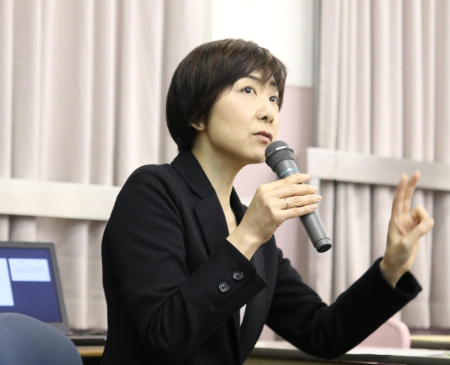 三泽真美惠现为日本大学文理学部中国语中国文化学科教授。专门研究的领域为台湾史丶华语圈电影史。主要中文著作有:《殖民地下的<银幕>――台湾总督府电影政策之研究「(1895―1942年)》(前卫出版社丶2002年)丶〈抗战初期中国国民党电影统制――以宣传部的电影制作为中心〉,姜进编《都市文化中的现代中国》(上海:华东师范大学出版社,2007年7月)丶李文卿丶许时嘉译《在「帝国」与「祖国」的夹缝间──日治时期台湾电影人的交涉和跨境》(台北:台湾大学出版中心,2012年4月)。
三泽真美惠现为日本大学文理学部中国语中国文化学科教授。专门研究的领域为台湾史丶华语圈电影史。主要中文著作有:《殖民地下的<银幕>――台湾总督府电影政策之研究「(1895―1942年)》(前卫出版社丶2002年)丶〈抗战初期中国国民党电影统制――以宣传部的电影制作为中心〉,姜进编《都市文化中的现代中国》(上海:华东师范大学出版社,2007年7月)丶李文卿丶许时嘉译《在「帝国」与「祖国」的夹缝间──日治时期台湾电影人的交涉和跨境》(台北:台湾大学出版中心,2012年4月)。Full Text
簡体字 / 正體字 / English摘要:
台湾电影院是从何时以何种方式开始播放国歌影片的?本文以援用为统合国民而实施的电影统制这一分析框架,通过该时期的政令丶新闻报导以及各地方档案资料等,探讨在战後台湾的反共抗俄总动员运动中,1950年代前半播放国歌影片作为一种仪式被确立下来的过程。从中,可以得知蒋介石对国歌的重视度,即“国歌之所以必欲由我手自拟成者”,以及延续了大陆时期以来的国民党政权的相关政策。在本文中,明确证实和梳理了由蒋介石亲自起草的三个版本的国歌。另外,在电影院播放国歌影片时,是把国歌影片和幻灯标语结合起来的,前者使用固定不变的影像,後者则是以配合时事的文字信息作为互补内容。播放国歌影片是国民党政权在制作具有影响力对抗其他国家作品的电影尚有困难的状况下,把电影院当作统合国民的活动课堂来加以利用的。然而,事实证明,最终并未达到蒋介石与国民党政权所预期的效果。
摘要:
台灣電影院是從何時以何種方式開始播放國歌影片的?本文以援用為統合國民而實施的電影統制這一分析框架,通過該時期的政令、新聞報導以及各地方檔案資料等,探討在戰後台灣的反共抗俄總動員運動中,1950年代前半播放國歌影片作為一種儀式被確立下來的過程。從中,可以得知蔣介石對國歌的重視度,即「國歌之所以必欲由我手自擬成者」,以及延續了大陸時期以來的國民黨政權的相關政策。在本文中,明確證實和梳理了由蔣介石親自起草的三個版本的國歌。另外,在電影院播放國歌影片時,是把國歌影片和幻燈標語結合起來的,前者使用固定不變的影像,後者則是以配合時事的文字信息作為互補内容。播放國歌影片是國民黨政權在製作具有影響力對抗其他國家作品的電影尚有困難的狀況下,把電影院當作統合國民的活動課堂來加以利用的。然而,事實證明,最終並未達到蔣介石與國民黨政權所預期的效果。
Abstract:
This paper analyzes the film regulations by the Nationalist Party (hereafter, KMT) in Taiwan, focusing on the national anthem film. It clarifies the process of establishing the screening program of the national anthem film at every theatre as a part of the mobilization movement for anti-communism and argues that Chiang Kai-shek placed great emphasis on the power of the national anthem to the extent that he himself tried to write it anew. It examines the content of the national anthem films and filmstrips screened in the program, to show their elements were designed to be mutually complementary. It also explores social reaction toward the national anthem and its film screening to suggest that it seems not so always effective in helping shape the nationalist awareness of Taiwanese audiences and enhancing national integration as much as Chiang and his KMT had aimed for.